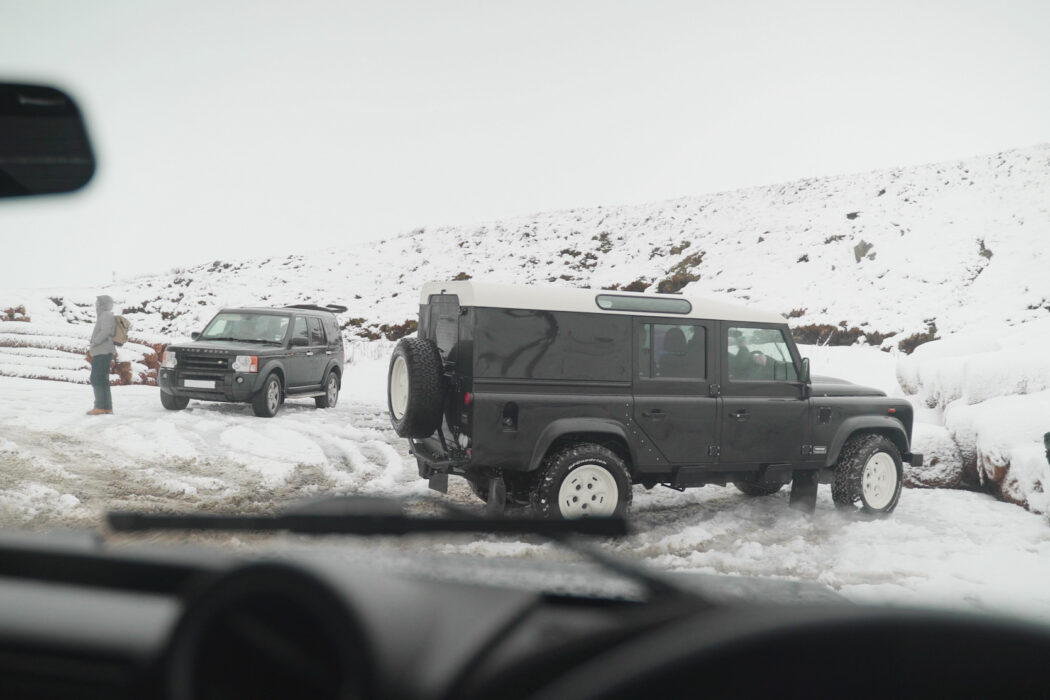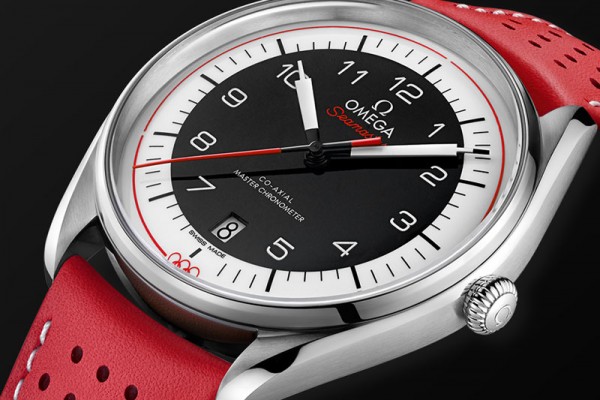As spring arrives in the UK, it marks six months since we started to plan the fettling of our Discovery 3 into a daily workhorse. The winter months were beginning to thaw and other than the cold, stark realisation that some of the six glow plugs might need replacing, all was well. The Java black Discovery had passed its first MOT without incident in darkest January. We had completed location shoots in Wales and North Yorkshire, so started to finalise our list of after-market and bespoke modifications and additions. These ranged from necessities to ideas that might need a more considered R&D budget. A roof tent is certainly an idyllic idea if you live in proximity to the Tropic of Cancer. However if your base is closer to the Arctic circle, I suggest an Airstream 534. As I said, some of the team’s more outlandish suggestions were vetoed in perpetuity. With GMT on our side, though, and the garage starting to become a little more habitable, it was almost time to set to work.
In terms of on-the-ground research, we had only managed to run in 5,000 miles or so in six months. Being confined to quarters, unless on location, meant when we finally set off for the McLaren GT shoot, the 2.6 ton LR3 had been stationary for at least ten days. I often wondered how it might perform in cold weather conditions. The sort of inclemency one might experience high in the Swiss Alps, for instance. To drop the tailgate and take a deserved seat in salopettes to watch the snow melt off well-powered skis, with a view of any alp, would indeed be the stuff of legend. Provided you let the Discovery’s plugs warm-up, cold starts were the only immediate consideration. We were shooting the McLaren GT on the Brecons and the temperature was about 9 degrees without wind, so there wasn’t much danger of getting stuck.
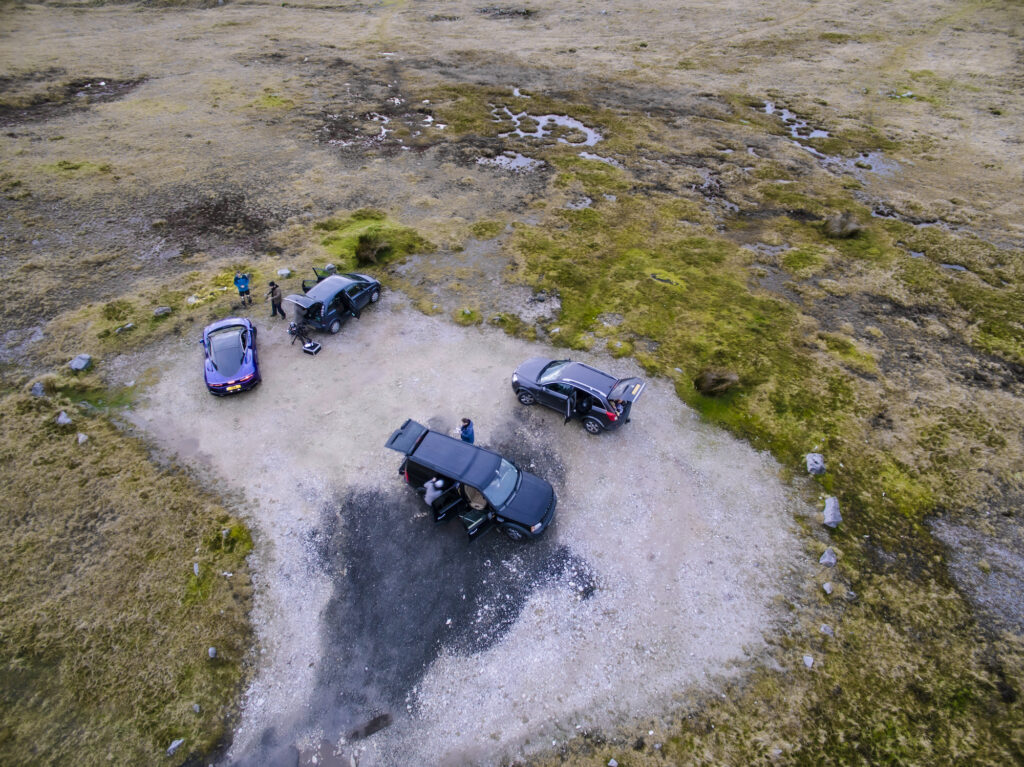
As a tracking vehicle for follow and tracking shots, the Discovery is up there with anything I have hired or retrofitted. I have seen cranes rigged on everything from the Porsche Cayenne and Macan to the gaffers tuned Golf GTI. Note: rigging a camera crane to a Macan or Cayenne makes you look distinctly over-budgeted by the way. This coming from a producer who once rode into Warsaw on the roof of a Twisted Defender to film fellow driver Tony Hawk. However, sitting up front in the Discovery with a checks monitor, heated seat and a hot coffee is certainly my preferred method.
After the obligatory conversation with the Brecon’s park wardens to ensure everyone’s seen to be earning their salary, we set off for some mid-speed tracking and passing shots. I was almost as enamoured by the £190,000 carbon fibre GT as I was by the £32,000 Discovery. Something about that early-noughties, blacked-out, Diesel-swigging LR3 filled me with the sort of adolescent adulation I had for Jet from Gladiators.
READ THE FEATURE HERE IN THE SPRING ISSUE
After two hours of farcically yet tactically moving leaves in and out of place for optimum slow motion takes, we packed the dolly, jib and sticks back into the Disco. I was learning that, whilst the all season poverty spec tyres were doing the job for the mild off-road needs, something would have to be done in the longer term. With the DOP and sound engineer comfortable, we headed for our final location, which involved some low-budget pyro and the realisation that the Discovery, for some unknown reason, had a headlight out. The light faded incredibly fast despite being at 1,617-feet, and we were left packing down in the dark, head torches a plenty. This shoot taught us that more powerful lighting was needed inside and out of the vehicle to aid in night shoots and pack down. Note, to those of you making your way to our hallowed Welsh shooting location: Snails Deli.
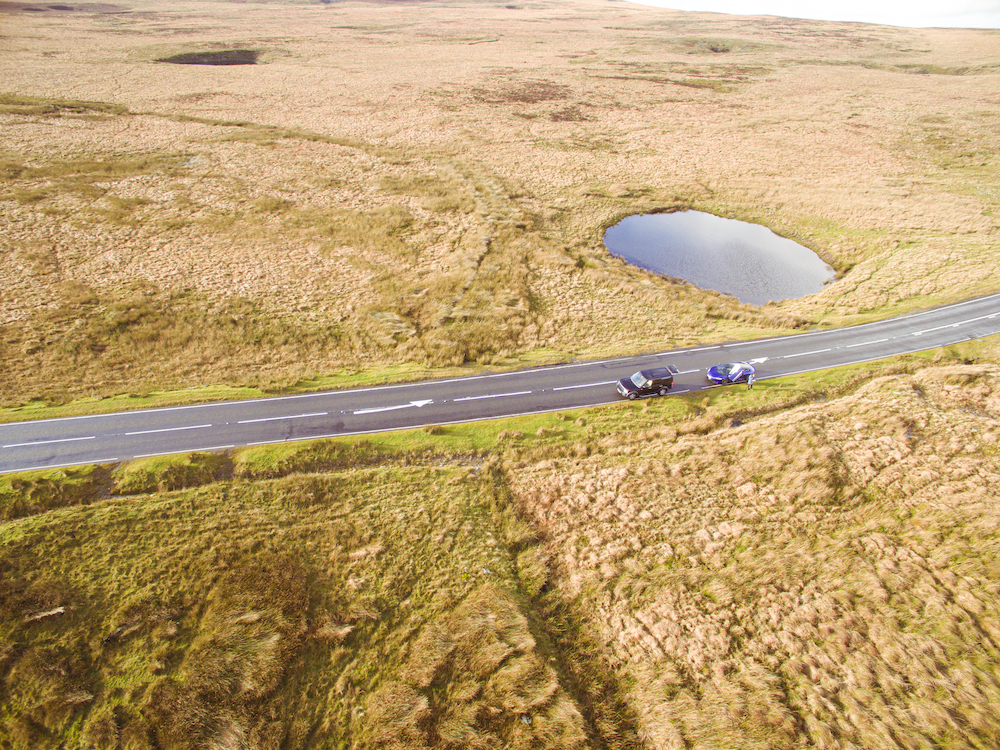
Our second shoot was in North Yorkshire and typically included a snowstorm. It also meant more of a support role for the Discovery, as the MotoCrane Ultra we’d planned to install wasn’t available to demo until post-pandemic. As much as a short hop to Minneapolis to meet Zach Nelson, CEO at MotoCrane, intrigued me, we would have to wait for the all-clear. We did consider using a BRP Traxter, but the distinct lack of windscreen put paid to that idea. Though to have been able to pop it on a trailer behind the Discovery and tow it to the location would have been epic.
Despite the Discovery being used more to move crew around, it was a welcome respite from the sub-zero temperatures in the Yorkshire Dales. It did give us time to consider whether an external and internal trim upgrade would be needed. Despite its age, the 2006 Discovery was actually faring rather well. Its cream S-grade interior was showing, let’s say, patina, but certainly was not dogeared.
With little knowledge of what went into a bespoke interior refit, I looked back over some of the notes that our automotive writer Aaron Edgeworth had penned during a Goodwood roundtable on the subject. Possible seat and dash replacements could well be in order, as well as leather upgrades. Though I was lost as to what the options might be for the Discovery’s two jump seats in the boot. As for external styling: to colour match or not to colour match? That is a tough one. For a utilitarian vehicle, the wheel arches, bumper and door trims are made from a rather sensible, unpainted, textured plastic. When you do find yourself off-road, it will only be a matter of time before a bump or a scrape befalls you. It goes with the territory. But replacing these low-cost plastic parts with gloss upgrade kits is quite popular. You can pick them up from a variety of vendors, but Powerfull UK offer a decent variety of kits. I am still not sold on account of the replacement costs, should we inevitably scratch them, but it’s an aesthetic choice.
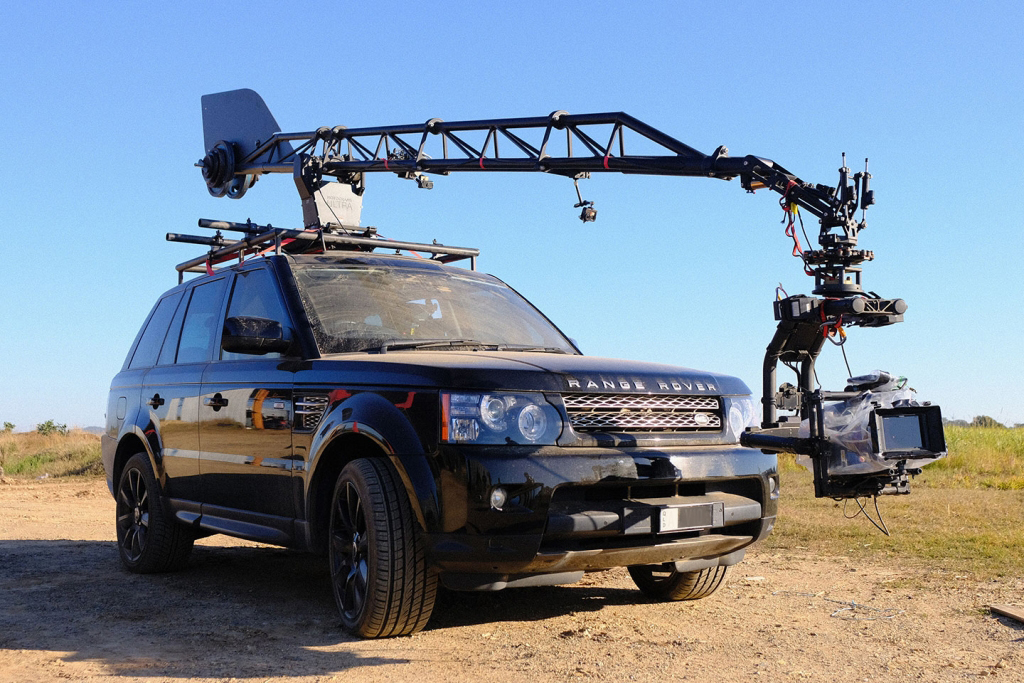
Two low-cost items that have become beyond useful, a rather low tech bluetooth FM transmitter and a DC-AC power inverter. The Discovery’s ample six disk head unit might have been a triumph before the iPod was released, but we’re in a different time now. I have long since got rid of my CD collection whilst retaining the vinyl and cassettes, of course, and gone digital. The Discovery has not. Whilst the cubby came loaded with a variety of classic ‘NOW something-or-another’ CDs, this was not the place for an ageing infotainment setup. Not only did I need sat-nav and music for the more obscure pan-European journeys, but making a footage review and charging facility available was a must, really. The cigarette-lighter-sized bluetooth transmitter, whilst rather low tech and still giving off low-level feedback, did the job. But fundamentally, it was an insult to what appeared to be a pretty decent amp, considering its age. Yes, we certainly needed an AV upgrade.
The 12V power output in the rear of the vehicle was perhaps the most appreciated asset, when it transpired I had forgotten to charge three of the V-Lock batteries for the day’s shoot. This is sacrilegious. On most large scale shoots, you can get fired for a shitload less, let alone rendering the entire production without the ability to film. Lucky for me, I had set up the production, the batteries were half powered from the day before and my DC-AC power inverter in the boot allowed us to run the cameras and charge the batteries on the move. This firmly added the need for a dual battery system to our growing list.
With our final day shooting complete and all vehicles back to base, there was little left to do but offload footage and start the drinking. Each time one of the crew ambled over to see the rushes, beer in hand, I was impressed by the unbridled love of the Discovery. “Perfect truck, that. Ideal”. It’s a lot less impressive when someone chases you down in London to tell you that ‘your’ new McLaren is ‘banging’. “It’s a brand new car that I had zero to do with, mate”, but I will take the compliment all the same. It’s 50/50 whether I explain it is a press vehicle or launch into an elaborate story about how it’s stolen and I am leaving the country with it. FYI, if someone under the age of twenty gingerly approaches you all dewy-eyed whilst you are sporting a piece of engineering excellence, you owe it to everyone that worked on the marque to show it to them inside and out. You just do.
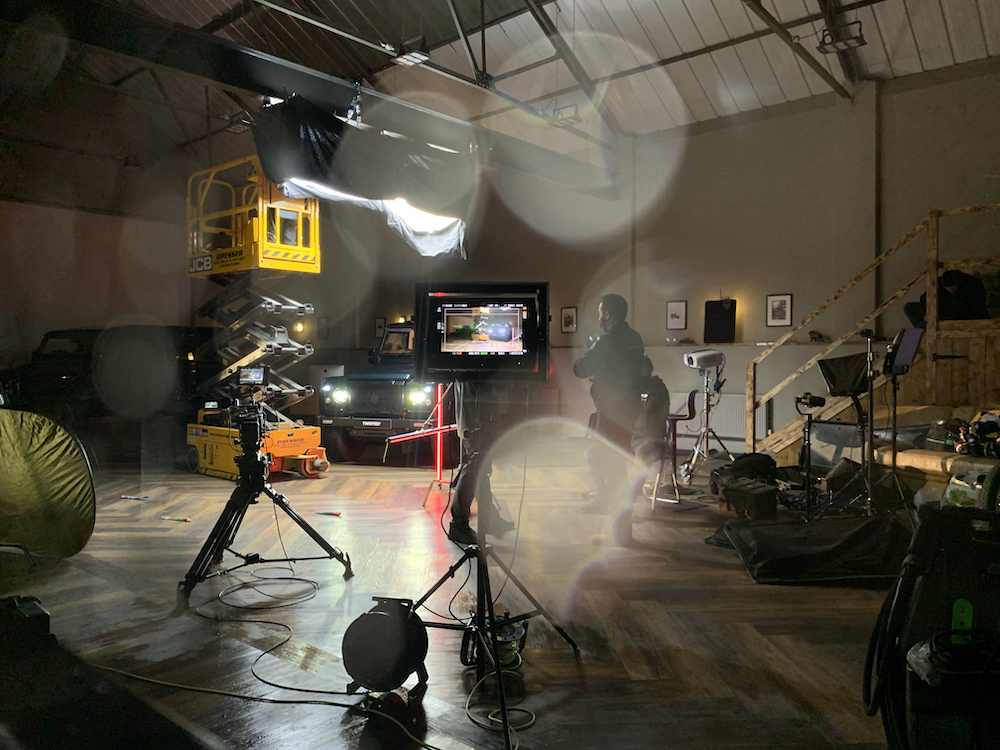
What I didn’t show them was the curious noise that was now coming from the offside wheel arch. I had headed back up north on a pick-up shoot to capture a few additional shots and, after rather unceremoniously mounting a kerb, was now hearing a scratching sound at low speeds. The breaks seemed unaffected and I couldn’t see anything in the arch to be causing the sound or obstructing the tyre. No warning lights had lit up, so I resided myself to a return journey without having it checked out.
All this despite being in the presence of Twisted Automotive, who could have diagnosed the issue in minutes. On my return journey, I encountered a stationary transit van and Ford Mondeo in the middle lane of the M5 southbound. There didn’t appear to be any debris or impact other than a lot of panicked looking faces and waved arms. As with everyone else, I reassuringly planted my foot on the breaks and was able to thread my way through the impending fracas at a slow speed. It did give me cause to consider what my stopping distance was though. It’s something we often take for granted in our daily driver, even as the demand for 4×4 and SUVs continues to build.
Thankfully, at the time, I was considerably less laden than I had been a few months previous. Three weeks later and I was looking at a bill for two brake disks, a front wheel hub and bearing assembly, a new sensor (of course), a new tyre and labour. I won’t tell you what my initial response was, but like all Discovery users, we had accepted our fate. I had weighed up the hire cost of a van and tracking vehicle and we were still coming out ahead.
So after six months of stationary anxiety, we were finally moving again. We had shelved our plans to shoot the Discovery’s fettling for The Review’s YouTube channel until the world had reopened for business and we were budgeted and ready. We look forward to seeing you all again in July, when we’ll have our first large-scale development projects underway.

